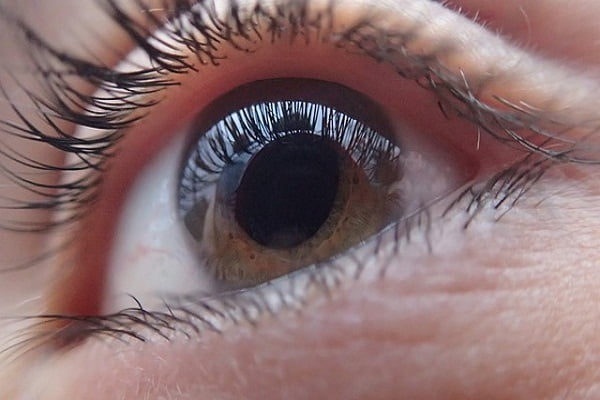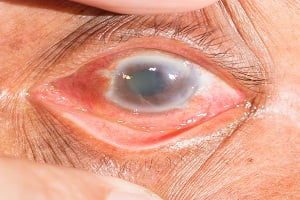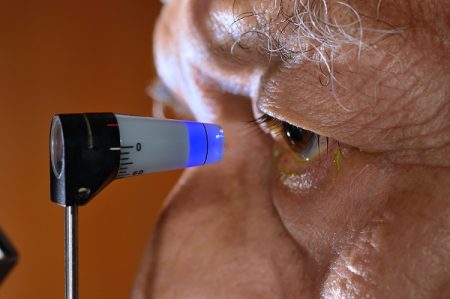Fast Facts About Glaucoma
- Updated on: Jul 2, 2024
- 3 min Read
Neha Mittal completed graduation in Biotechnology from Graphics Era University, Dehradun and Masters in Biotechnology from Amity University, Noida. In the past, she worked with Sharon Biomedicine Ltd., DUKES Products Ltd., and Forest Research Institute, Dehradun as researcher in biotechnology.
- Published on Apr 25, 2021

What is Glaucoma?
Glaucoma is a disease which is caused by the damage of optic nerve which helps in signalling the electrical impulse from retina to the brain. Increased fluid (aqueous) pressure also called as ocular hypertension damages the optic nerve in the eyes.
This disease commonly occurs in people of age 40 and above and is believed to be inherited in nature.
ADVERTISEMENT
ADVERTISEMENT
Progressive and slow impairment in vision and permanent loss of the vision in some cases are caused by glaucoma. Very few or no symptoms at early stages are seen but when symptoms occur, they are irreversible and other conditions may also develop which are hard to stop and cure. This makes the disease dangerous.
Read more about glaucoma and its types.
Fast facts
- Glaucoma is the leading cause of blindness and low vision in the U.S and is caused by fluid pressure increase in the eyes which damages the optical nerve leading to impaired vision and vision loss gradually. Read about glaucoma causes.
- Glaucoma often has no early warning signs and therefore is also called ‘the sneak thief of sight’. It leads to gradual vision loss starting from the peripheral vision spreading to the central vision.
- It occurs in babies as well as in people of age 40 and above.
- People with a family history of glaucoma such as their mother, siblings, and children having the disease and people with certain other disease conditions like diabetes, eye injury, high blood pressure, and with an age above 40 or 60 are at risk of getting it.
- People with a risk of getting glaucoma should undergo eye check-up after every 1 or 2 years even if they have no glaucoma to prevent disease development.
- There is currently no cure for glaucoma and the vision loss is irreversible but through early detection and monitoring with treatment of the disease one can retain useful sight for life and slow the disease progression. Read about treating glaucoma.
- There are majorly two types of glaucoma- open angular glaucoma and closed angular glaucoma.
- Other not so common forms of glaucoma are Normal-Tension Glaucoma, Secondary Glaucoma, Pigmentary Glaucoma, Pseudoexfoliative Glaucoma, Traumatic Glaucoma, Neovascular Glaucoma, Irido Corneal Endothelial Syndrome (ICE), Congenital Glaucoma (Childhood Glaucoma).
- Glaucoma causes vision loss if not diagnosed and treated at early stages. Even approximately 10% of people who receive treatment still lose their vision.
- It affects more than 3 million people in the U.S and is the second leading cause of blindness after macular degeneration.
- About 2.7 million Americans who are 40 years and above are affected by one of the most common types of glaucoma- the open angle glaucoma.
- About 3.3 million Americans of age 40 and above are affected by blindness or low vision due to glaucoma.
- Worldwide, glaucoma is the second leading cause of blindness after cataract and affected 60.5 million people in 2010, and this number is expected to become double by 2020 as the people age.
- African Americans are 6 to 8 times more likely to go blind from glaucoma than Caucasians.
- African Americans get visual impairement from glaucoma 15 times more than Caucasians.
- Open angular glaucoma accounts for 19% of all blindness cases among African American as compared to 6 % among Caucasians.
- Glaucoma is not always caused by high fluid pressure or ocular hypertension. It is sometimes caused by an improper regulation of blood flow to the optic nerve of the eye.
- Regular eye check-up and monitoring is needed to detect any symptoms and development of glaucoma condition so as to prevent it from worsening and save vision by early treatment and cure. Read about signs and symptoms of glaucoma.
- It accounts for over 10 million visits to doctors each year.
- After cancer and heart disease, blindness is the third major fear of people.
- Glaucoma treatment costs $1.5 billion annually to the U.S government.
Share this article
ADVERTISEMENT












